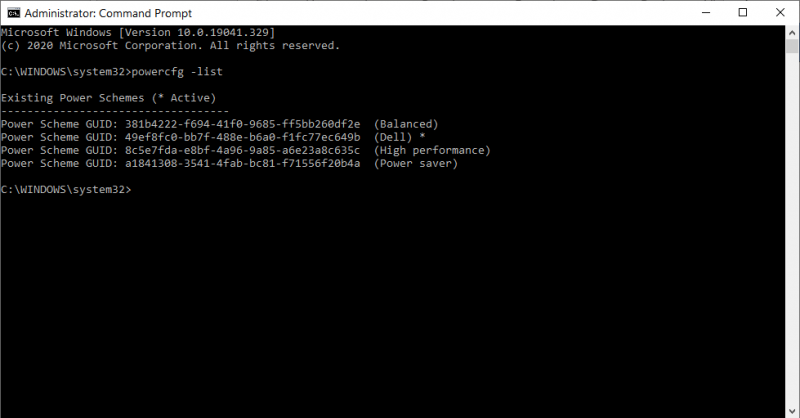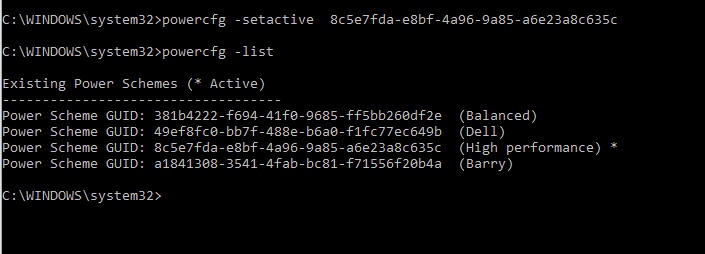As you may know, your computer can run under a variety of different power schemes. A power scheme is a collection of hardware and system settings that manage how your computer uses power. They are typically used the most with laptops, where it's more crucial to trade off between performance and battery preservation. Even a desktop machine can use them, though. There are three schemes that come with Windows by default. They are Balanced, High Performance, and Power Saver, and you can create others if none of these suits you.
There is a command utility in Windows called Powercfg, which provides a great deal of control over your power schemes. (You can use the GUI for much of this functionality, too, but a lot of people prefer using the command line.) Powercfg takes numerous switches to tell it what you want to do regarding your power schemes. To see all of the switches available to Powercfg, invoke it with the "-HELP" (or "-?") switch.
For this tip we want to change the active power scheme. First, we'll get a list of the available power schemes (covered under another tip). (See Figure 1.)

Figure 1. Powercfg -list.
As you can see, there's an asterisk on the right of the Dell line (this is a power scheme that was added previously), denoting that it's currently the active scheme. Let's say that we instead want the High performance scheme to be active. You do this by specifying the "-SETACTIVE" (or "-S") switch followed by the GUID of the scheme you want to be active: (See Figure 2.)

Figure 2. Powercfg -setactive.
Now the asterisk is beside the High performance scheme, denoting it's now the active one.
![]()
![]()
![]() This tip (13491) applies to Windows 7, 8, and 10.
This tip (13491) applies to Windows 7, 8, and 10.
Don't like the built-in power management plans that Windows provides? You can create your own to better fit your power needs.
Discover MoreThe battery in your laptop provides the power you need to even use the system. As you use your laptop, you may notice ...
Discover MoreIf you attach a new device to your computer or need to update a current device's driver, this tip provides the general ...
Discover MoreThere are currently no comments for this tip. (Be the first to leave your comment—just use the simple form above!)
Copyright © 2026 Sharon Parq Associates, Inc.
Comments